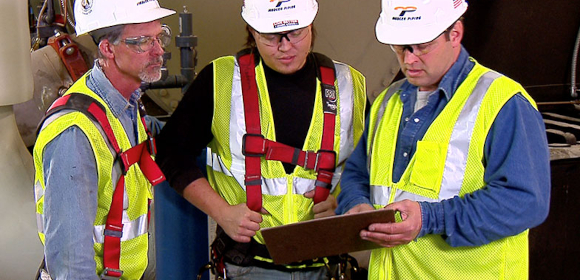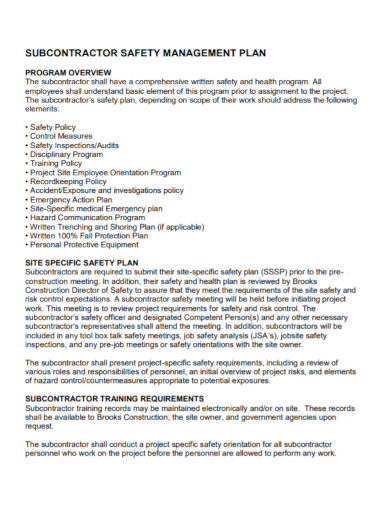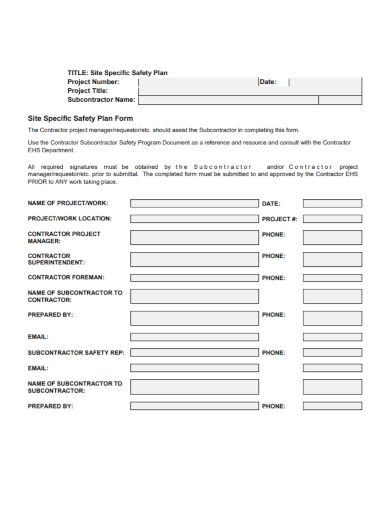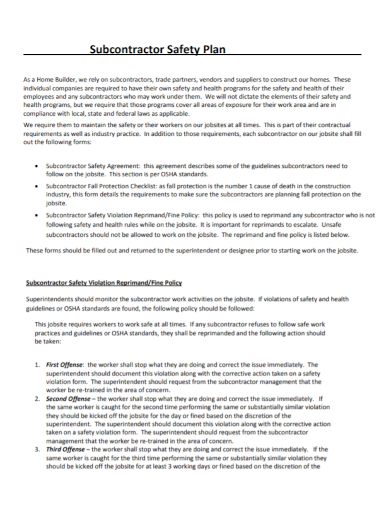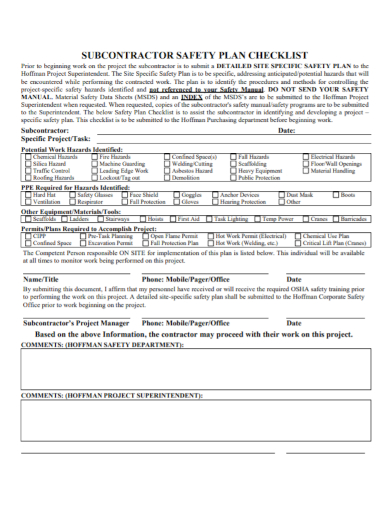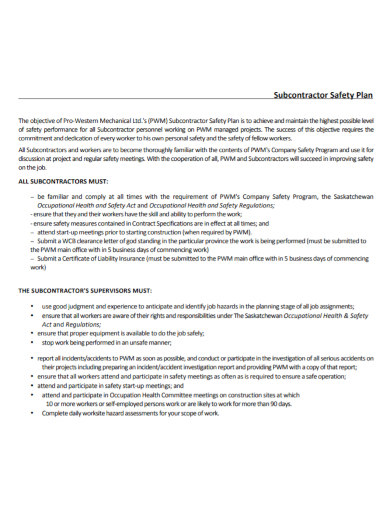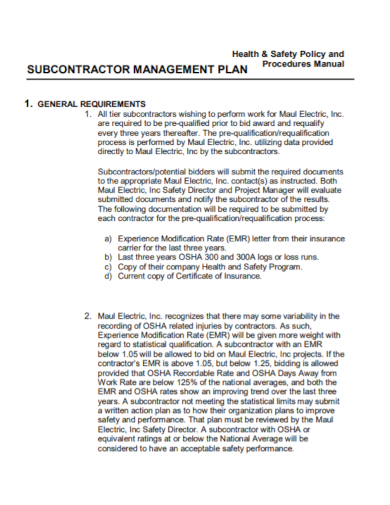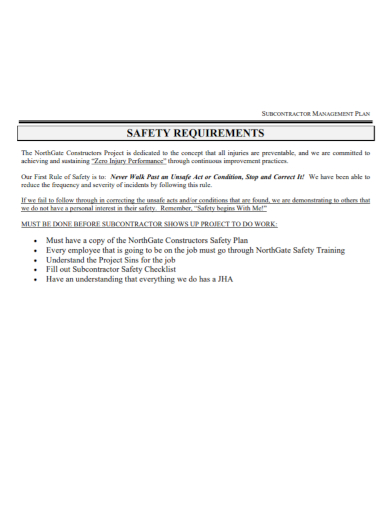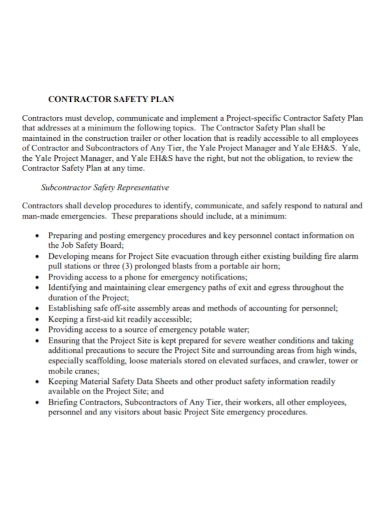Safety plans are important to have in every construction job, whether it’s a small project or complex because it serves several purposes: It gives all workers the correct information that they have to know to handle certain unexpected situations such as accidents and mishaps in the worksite. For construction jobs, the safety plan usually takes into account the following scenarios or hazards that they want to avoid or mitigate. Some examples of these are equipment failure, operator failure of heavy equipment, fire and electrical hazards, chemical exposure, improper handling of materials especially heavy object, noise pollution, lack of cleanliness, and organization that can lead to accidents. Having a well-thought-out safety plan also signifies that the contractor’s or subcontractor’s company has the best interest of their workers, especially with their health and safety. Ensuring that a worksite is safe to work in can help workers be more productive. This article will guide you on how to make a subcontractor safety plan.
8+ Subcontractor Safety Plan Samples
1. Subcontractor Site Specific Safety Plan Template
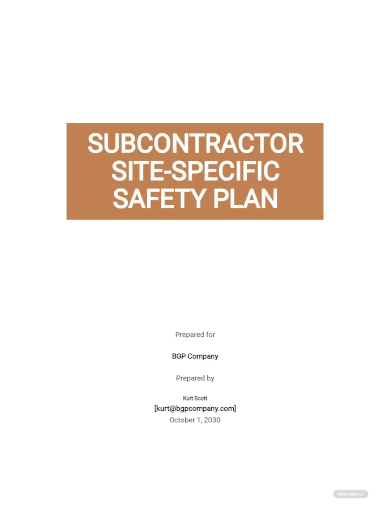
2. Subcontractor Safety Management Plan
3. Subcontractor Site Specific Safety Plan Form
4. Subcontractor Safety Plan
5. Subcontractor Safety Plan Checklist
6. Sample Subcontractor Safety Plan
7. Subcontractor Health and Safety Management Plan
8. Subcontractor Safety Requirements Management Plan
9. Subcontractor Safety Representative Plan
What is a Safety Plan?
A safety plan is a written document that gives a specific and detailed framework for safety practices in the workplace. Safety plans are targeted to a specific activity or department in the workplace.
Details to Include in a Subcontractor Safety Plan
The following information below should be included in the safety plan:
- Project name and project location
- Description and a visual diagram of the subcontractor’s project
- List and description of site conditions and exposures
- Travel routes of delivery of objects and equipment within the worksite
- Description of building entries and stairwells
- Location of any hazardous materials and written protocols for dealing with those materials
- Safety standards and location of any potential dangerous spots on the worksite
- Hazard communication and response plan in case of an accident
- First aid protocols
- Clear definition of roles and responsibilities for each worker and subcontractor
- Contact information of safety representatives and emergency contacts
- List of construction site safety rules
- Immediate action to take in case of emergencies and accidents
- Procedures to secure the area in case of a security breach
- Method(s) of communication to alert the important personnel about incidents
- Instructions of safe handling and application with equipment and hazardous chemicals
- List of protective gear needed for workers to wear, such as masks, hard hats, or gloves
- Evacuation routes
- Reporting and data collection procedures
- Training plans
- Waste or equipment disposal plan
FAQs
What are the 3 Es of safety?
The 3Es of safety in the workplace are engineering, enforcement, and education.
What are the responsibilities of a contractor?
A contractor’s responsibilities include applying for building permits, securing the property, providing temporary utilities on the worksite, managing personnel on-site, providing site surveying and engineering, disposing or recycling construction waste, and monitoring schedules of the job being done.
Why some site-specific safety plans fail?
A safety plan sometimes fails because the details in it do not address particular issues specific to a given site. For example, the safety plan might fail to take into account project specifics, such as the site layout that can affect the safety of all workers. It might also leave out important information regarding any dangerous chemical components used in the project, an accurate visual diagram of the site, or important details about the location of the worksite that will affect the construction job being done there.
Before you print the final copy of the safety plan that you will use to orient your workers and other contractors during the job on the construction site, make sure to check it and review it for any grammatical errors or inaccurate details. You may ask a colleague to help you out in the editing process to ensure no details are spared and your safety plan is organized well to make it look professional. To help you get started on writing the safety plan, download our free sample templates above to use as your guide!
Related Posts
FREE 3+ Sales Team Action Plan Samples in PDF | MS Word | Apple Pages | Google Docs
Marketing Plan For Small Business Samples
FREE 7+ Fashion Business Plan Samples in PDF
FREE 10+ Sprint Planning Samples In MS Word | Google Docs | PDF
FREE 10+ Wedding Planning Samples in MS Word | Apple Pages | Powerpoint | PDF
FREE 9+ Monthly Study Planner Samples in PSD | Illustrator | InDesign | PDF
FREE 9+ Sample Curriculum Planning Templates in PDF | MS Word
FREE 10+ Teacher Development Plan Samples in MS Word | Google Docs | Apple Pages | PDF
FREE 10+ Basketball Practice Plan Samples in PDF
FREE 12+ School Business Plan Samples in PDF | MS Word | Apple Pages | Google Docs
FREE 7+ Client Strategic Plan Samples in PDF | MS Word
FREE 11+ Trucking Business Plan Templates in PDF | MS Word | Google Docs | Pages
FREE 7+ Small Hotel Business Plan Samples PDF | MS Word | Apple Pages | Google Docs
FREE 14+ Bakery Business Plans in MS Word | PDF | Google Docs | Pages
FREE 4+ Yearly Lesson Plan Samples in PDF
